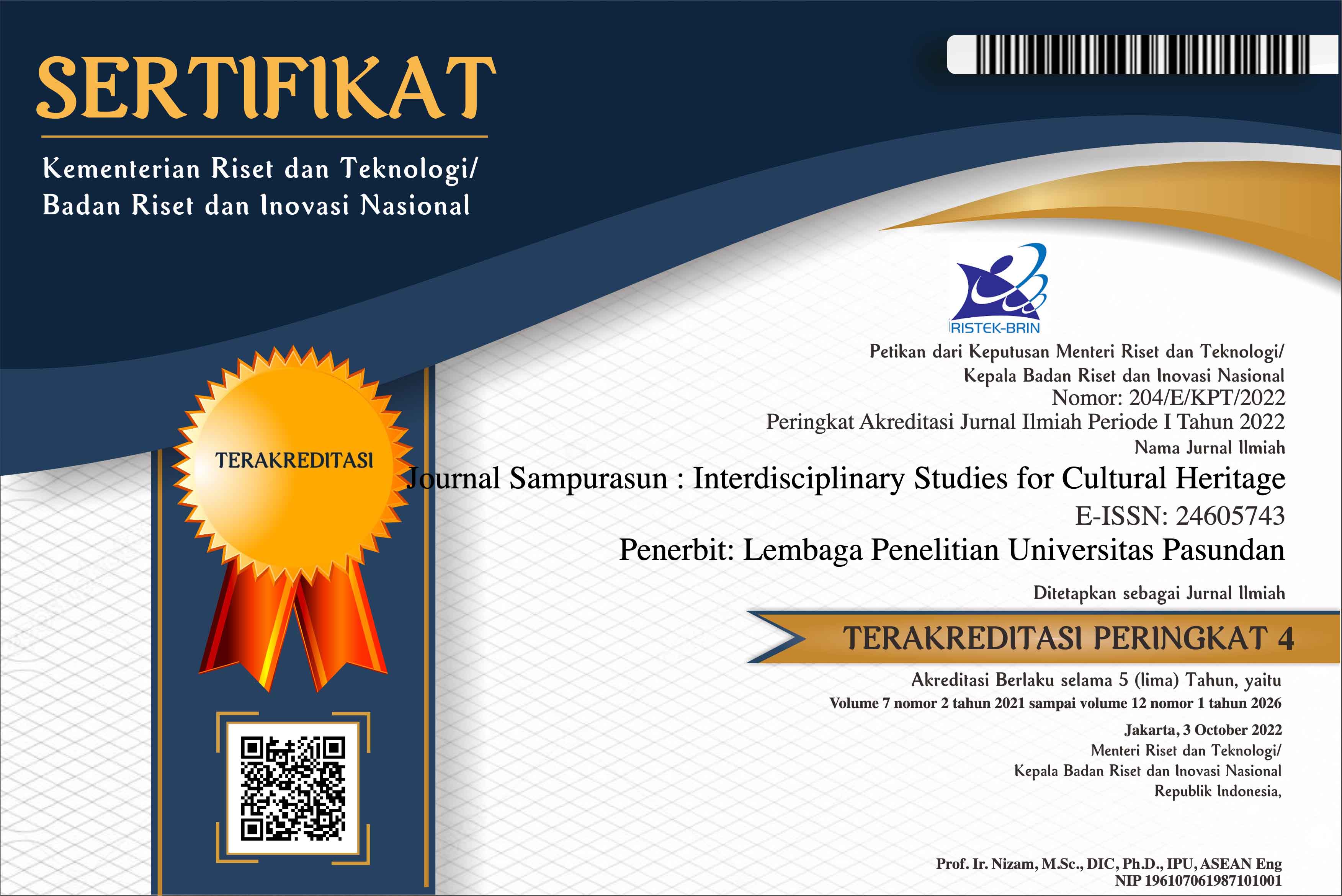CULTURAL AND HERITAGE TRAIL TOURISM: STRENGTHENING LOCAL ECONOMY AND CULTURE RESOURCE CONSERVATION AT KOTAGEDE YOGYAKARTA
DOI:
https://doi.org/10.23969/sampurasun.v5i2.1217Keywords:
Tourism, Cultural Heritage, Trail Tourism, Kotagede, Remote Sensing, GISAbstract
The tourism industry is one of the sectors that can accelerate the economic movement in the region, so as to accelerate the growth and regional development. The benefits of the tourism industry at least able to improve the economic level of the tourist area. Kotagede Heritage Area is one of the main tourist destinations in Yogyakarta. Heritage trail tour activities that exist in the area of Kotagede is able to provide historical knowledge. The activity depends on the interest of the people and tourists in choosing tour packages. The research on heritage trail tourist object in Kotagede is using qualitative research method and combined with high-resolution remote sensing image data. The tourism of this Kotagede can be categorized into the resilience of community-based tourism areas in strengthening the local economy as well as and the preservation of cultural resources viewed from various aspects. The first aspect is the wage policy aspect given to the members of the cruise board, from which the youth who become tour guides can get income that can reduce the unemployment rate of the youth. The second aspect is in terms of trade, with the activity of tourism, the surrounding community who use to peddle traditional food to the modern will be a positive impact with the more their wares, especially if it is incorporated into one of the destinations of the tourist route. This aspect of trade can improve the welfare of the surrounding community by making it as a livelihood. The last aspect is the aspect of maintenance and rehabilitation of the infrastructure of the development area by private and government-related stakeholders. This can make the tourist area better and grow so as to increase the willingness of tourists to come to the place if the infrastructure is more compact.
Downloads
References
Anurogo, W., Lubis, M. Z., Pamungkas, D. S., & Ibrahim, F. M. (2017, December). A Spatial Approach to Identify Slum Areas in East Wara Sub-Districts, South Sulawesi. In IOP Conference Series: Earth and Environmental Science (Vol. 98, No. 1, p. 012030). IOP Publishing.
Anurogo, W., Lubis, M. Z., Hartono, H., Pamungkas, D. S., & Dilaga, A. P. Kajian Ketahanan Kawasan Wisata Berbasis Masyarakat Dalam Penguatan Ekonomi Lokal Serta Pelestarian Sumberdaya Kebudayaan Kawasan Kotagede Yogyakarta. Jurnal Ketahanan Nasional, 23(2), 114-136.
Hardjono, J. M. (1991). Indonesia: Resources, ecology, and environment. Oxford University Press, USA.
Peypoch, N., & Solonandrasana, B. (2007). On “E-Attraction” Tourism Destination” Extension and Application. In Advances in modern tourism research (pp. 293-306). Physica-Verlag HD.
Rahmi, D. H. (2017, December). Building resilience in heritage district: lesson learned from Kotagede Yogyakarta Indonesia. In IOP Conference Series: Earth and Environmental Science (Vol. 99, No. 1, p. 012006). IOP Publishing.
Strauss, A., & Corbin, J. (1990). Basics of qualitative research (Vol. 15). Newbury Park, CA: Sage.
Vanhove, N. (2017). The Economics of Tourism Destinations: Theory and Practice. Routledge.
Downloads
Published
Issue
Section
License
Copyright Notice
Authors should not withdraw their submitted papers because the withdrawal wastes voluntary works devoted by an associate editor and reviewers. But, we accept the withdrawal of a submitted paper if authors have unavoidable reasons. In the event that a manuscript is to be withdrawn from submission to Sampurasun Journal, a letter must be sent to the editorial office requesting withdrawal by e-mail (sampurasunjournal@unpas.ac.id) with its scanned PDF file, before the notification of acceptance for publication.
The withdraw request letter must include the following information. Paper ID, Paper title, Authors names, Reason why the paper must be withdrawn, and Date and signatures of all the authors (or signature of the contact author).
If only the contact author signs the letter, he/she must obtain the agreement of the withdrawal from all the other authors and the letter must include the description that all the other authors agreed the withdrawal. The journal will not withdraw a manuscript from peer review until such a letter has been received. Authors must not assume their manuscript has been withdrawn until they have received appropriate notification from the editorial office. Withdrawal of a manuscript subsequent to acceptance for publication will only be granted in the most exceptional of circumstances.
After the paper is accepted for publication, the withdrawal is not permitted in principle. The authors must always pay the charge even if the withdrawal is permitted. Any request of withdrawal that does not follow the above procedure is treated as invalid. If illegal submission, e.g., plagiarized or duplicate submission, is found for a paper, the withdrawal of the paper will never be permitted and the authors will be punished based on the rule. It is not acceptable practice to withdraw a manuscript in the event of acceptance at another journal. This constitutes dual submission. The editorial office of the other journal will be notified of your actions. In such circumstances Sampurasun ISCH may chose to impose appropriate punitive action subject.
Withdrawal Penalty
Author is not allowed to withdraw submitted manuscripts, because the withdrawal is waste of valuable resources that editors and referees spent a great deal of time processing submitted manuscript, money and works invested by the publisher. If author still requests withdrawal of his/her manuscript when the manuscript is still in the peer-reviewing process, author will be punished with paying $200 per manuscript, as withdrawal penalty to the publisher. However, it is unethical to withdraw a submitted manuscript from one journal if accepted by another journal. The withdrawal of manuscript after the manuscript is accepted for publication, author will be punished by paying US$500 per manuscript. Withdrawal of manuscript is only allowed after withdrawal penalty has been fully paid to the Publisher. If author don't agree to pay the penalty, the author and his/her affiliation will be blacklisted for publication in this journal. Even, his/her previously published articles will be removed from our online system.


















